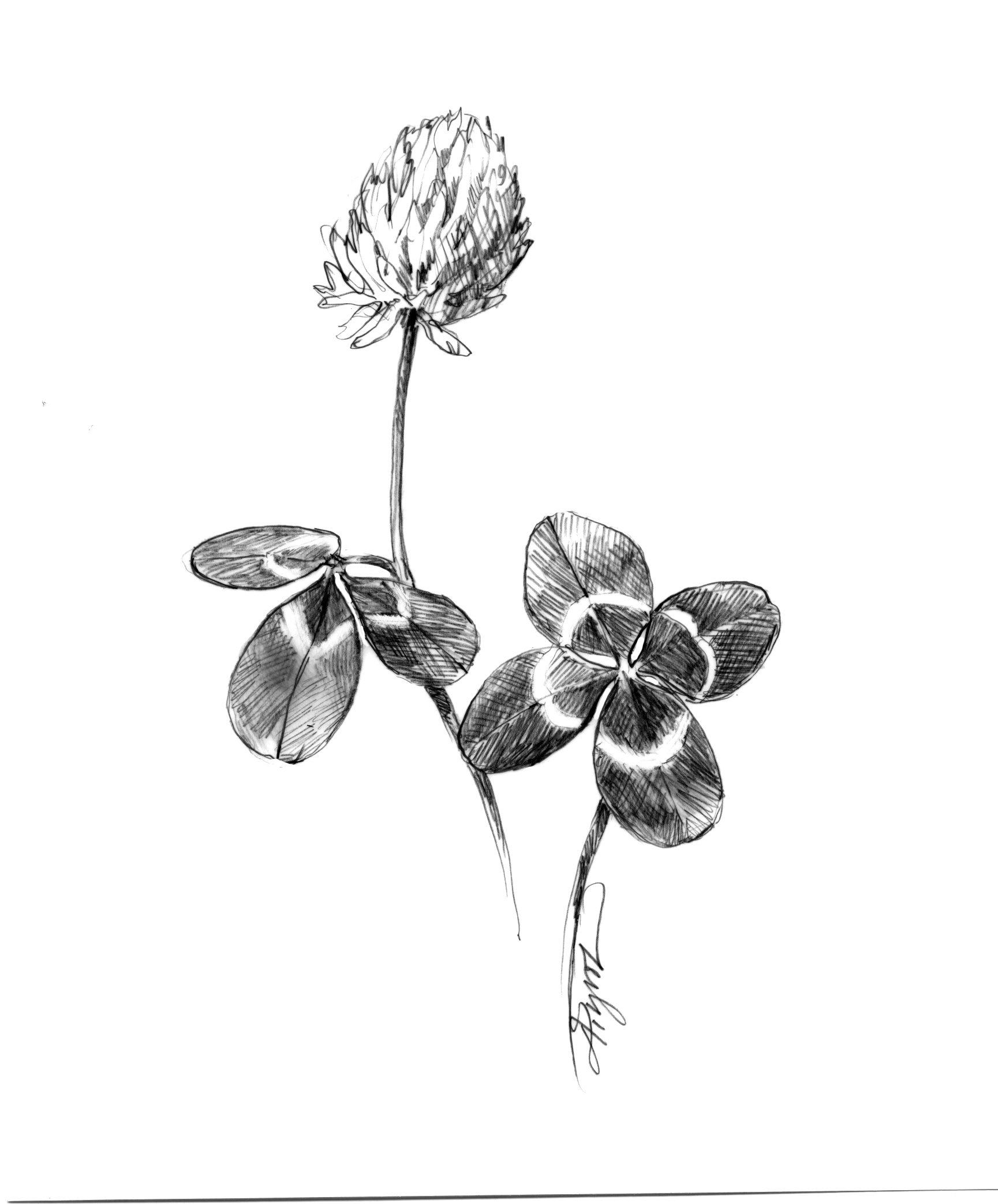The Outside Story | Clover: Flower or weed?
April 21, 2023 | By Laurie D. MorrisseyIllustration by Adelaide Murphy Tyrol
Call it a flower or call it a weed – clover is a plant everyone knows. Who hasn’t idled away an hour hunting for a four-leaf clover, hoping for good luck?
A member of the legume family, clover is common in lawns and fields, in disturbed sites, and along roadsides. Of the world’s 300 clover species, none are native to the northeastern United States, although 19 species exist in New England, including the familiar white clover (Trifolium repens) and red clover (T. pratense). European settlers introduced clover as a cover crop and high-protein livestock forage, and the plant has become widely naturalized throughout the region.
Clover, also known as trefoil because of its three-part leaflets, has become an important food source for a variety of wildlife. Large and small mammals, partridge, grouse, and other birds consume the plants, which are high in protein. It is a top nectar plant for bees, butterflies, and moths and an important food source for caterpillars. Clover is a mainstay of many other insect diets, including the green lacewing, which also eats aphids and other garden pests.
White clover, also called Dutch clover or creeping clover, is a favorite among pollinators, since the shallowness of its floral tubes make the nectar easily accessible. It’s also the clover species most likely to produce leaves divided into more than three leaflets; some white clover plants have a rare recessive gene that causes them to produce extra leaflets.
Four-leaf clovers traditionally represent faith, hope, love, and luck. They are as rare as one in 10,000. Even rarer are clover leaves divided into more than four leaflets. The record holder is a 56-leaflet clover found in Japan.
Elusive as four-leaf clovers are, some people have a penchant for finding them. A Wisconsin woman, Gabriella Gerhardt, holds the Guinness World Records for finding the most four-leaf clovers (887) in eight hours, as well as the most (451) in one hour, and she is waiting for confirmation of two more records: the largest collection of six-leaf clovers (1,437) and the largest collection of seven-leaf clovers (209). Her clover collection contains 75,000 specimens and counting.
White clover grows in patches from one root system and spreads into mats – which you’ve probably noticed if you’ve tried to pull it out of your lawn. So, if you find one four-leaf clover, you are more likely to find more in that spot. Look carefully at the roots and you’ll see tiny nodules, which contain bacteria that take atmospheric nitrogen and fix it into a form the plant can use. Sitting atop a 2- to 4-inch-long stalk, each small flower head is a cluster of 40 to 80 tiny flowers, or florets, which are white and often tinged with pink. The rounded leaflets have a slight notch and a white or light gray V-shaped mark.
Red clover, the state flower of Vermont, grows 8 to 30 inches tall, with rounded, pinkish-purple flower heads and long leaflets bearing a faint greenish V. Bumblebees (with longer tongues than honeybees) have no trouble working the deep florets. Even in dry periods, red clover is a great nectar producer through summer and into autumn.
Two other clover species common in our region are T. arvense, or rabbit-foot clover – named for the fuzzy, pinkish-white or grayish flower heads – and T. hybridum, or alsike clover, so called after a town in Sweden.
The Northeast also has three species of hop clover, named for their bright yellow blossoms, which droop and turn rusty brown as they age, resembling dried hops. Trifolium dubium, T. campestre, and T. aureum are fairly common, according to Arthur Haines, senior research botanist at the Native Plant Trust. Each has several common names, so many amateur botanists are content to refer to them all as hop clover.
Despite its benefits to wildlife and agriculture, there is a downside to this introduced plant. While clover does not present a serious ecological threat, botanists point out that it does present competition for native plants, and several Trifolium species are known to invade natural areas in some parts of the U.S. outside of the Northeast.
“In natural communities, Trifolium species are generally considered weedy to invasive and not to be encouraged,” said New Hampshire state botanist William Nichols. “In general, it is always preferable to promote native species for wildlife.”
Laurie D. Morrissey is a writer who lives in Hopkinton, New Hampshire. The Outside Story is assigned and edited by Northern Woodlands magazine and sponsored by the Wellborn Ecology Fund of the New Hampshire Charitable Foundation.

